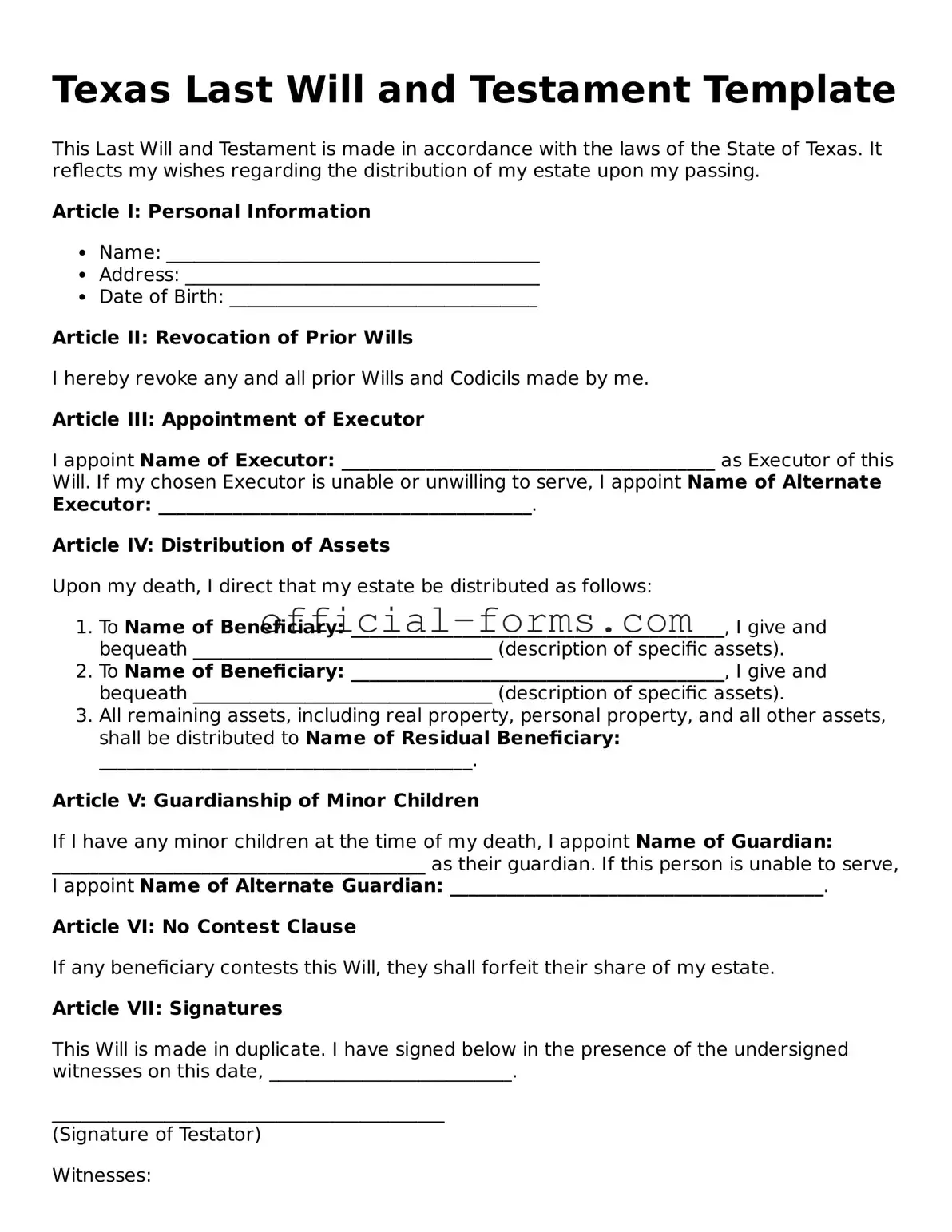Filling out a Texas Last Will and Testament form is a crucial step in ensuring your wishes are honored after your passing. However, many individuals make common mistakes that can lead to confusion or even invalidate the will. One significant error is failing to properly sign the document. In Texas, a will must be signed by the testator, or someone else at their direction, in the presence of two witnesses. Neglecting this step can render the will invalid.
Another frequent mistake is not having the required witnesses. Texas law mandates that a will must be witnessed by at least two individuals who are at least 14 years old. If the witnesses do not meet these criteria, the will may face challenges during probate. It’s essential to ensure that your witnesses are not beneficiaries of the will to avoid potential conflicts of interest.
Some people overlook the importance of clearly identifying beneficiaries. Ambiguities can lead to disputes among heirs. Make sure to provide full names and, if possible, relationships to you. Additionally, avoid using vague terms like "my children" without specifying which children you mean, especially in blended families.
Another common pitfall is failing to update the will after significant life changes. Events such as marriage, divorce, or the birth of a child can affect your wishes. If your will does not reflect your current situation, it may not serve your intentions effectively. Regularly reviewing and updating your will is a smart practice.
Many individuals also neglect to include a clause for the appointment of an executor. This person will be responsible for carrying out your wishes. Without an appointed executor, the court may appoint someone who may not align with your preferences. Choose someone trustworthy and capable of handling the responsibilities involved.
Lastly, some people underestimate the importance of storing the will safely. Leaving it in a location that is not secure or easily accessible can lead to complications. Keep the original document in a safe place, such as a safety deposit box, and inform your executor or family members where to find it. Proper storage ensures that your wishes can be honored without unnecessary delays.
